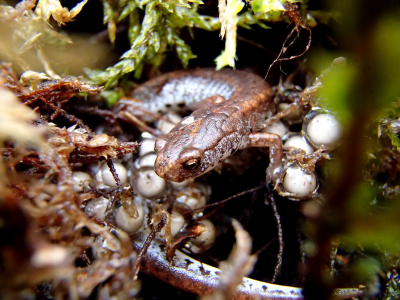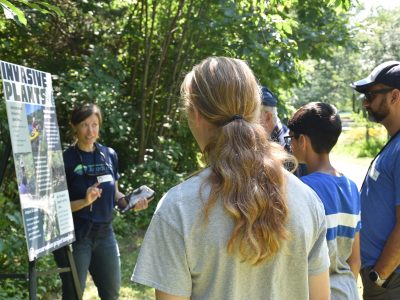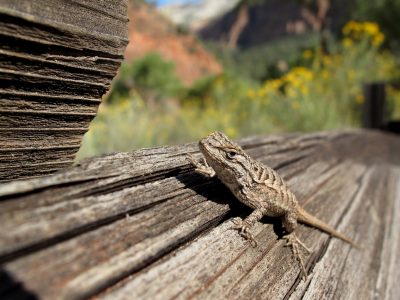Nicole Freidenfelds
Visiting Assistant Extension Educator | Department of Natural Resources and the Environment
Extension and Research Scope
I coordinate or contribute to all of the NRCA's environmental action programs, with particular emphasis on the Eco-Digital Storytellers, and will soon be reigniting our Teacher Professional Learning program with support from a new EPA Environmental Education grant.
Previously, I led the Conservation Training Partnerships (now-retired), a collaborative program that brought teen and adult volunteers together to apply geospatial technology tools toward local conservation projects in their own community. I worked with land trusts, non-profit organizations, and municipal agencies to mentor/advise many unique and varied intergenerational conservation projects throughout the state.
Before joining the NRCA I had the rewarding experience of teaching biology, chemistry and environmental science at the high school level. The majority of my career, however, has been spent as a research scientist, mainly focused on studying the behavior, ecology and evolution of amphibians and reptiles.



Publications
- Freidenfelds, N.A., J. Deitloff and T. Langkilde. 2023. Lessons from Lizards: Adaptation to Introduced Ants. Lessons in Conservation. 13(1)44-60.
- Cisneros, L., Campbell, T., Freidenfelds, N., Lindemann, A., Elliot-Famularo, H., Chadwick, C., Dickson, D., & Park, B. 2023. Eco-digital storytelling: Engaging historically excluded populations in environmental action through mentoring, geospatial technology, and digital media storytelling. Frontiers in Education. 7:1083064.
- Simmons, J., Campbell, T., Moss, D. M., Volin, J. C., Arnold, C., Cisneros, L. M., Chadwick, C., Dickson, D. & Freidenfelds, N. 2022. ‘Part of our DNA': intergenerational family learning in informal science. International Journal of Science Education, Part B Communication and Public Engagement.
- Freidenfelds, N.A., Cisneros, L. M., Cabaniss, A. D., Colby, R., Meadows-McDonnell, M., Arnold, C., Campbell, T., Chadwick, C., Dickson, D., Moss, D., Simmons, J., Singh, A. K., & Volin, J. C. 2022. Pivoting during a pandemic: Transforming in-person environmental STEM field programs into immersive, experiential distance learning. Connected Science Learning, 4(2)
- Cisneros L.M., J. Simmons, T. Campbell, N. Freidenfelds, C. Arnold, C. Chadwick, D. Dickson, D. Moss, L. Rodriguez and J.C. Volin. 2021. Program design principles to support teen-adult community conservation efforts. Frontiers in Education. 6: 674667.
- Urban, M.C., N.A. Freidenfelds and J.L. Richardson. 2020. Microgeographic divergence of functional responses among salamanders experiencing antagonistic selection from apex predators. Proceedings of the Royal Society B. 287: 20201665.
- Freidenfelds, N.A., Cisneros, L.M., Rodriguez, L., Byung-Yeol, P., Campbell, T., Arnold, C., Chadwick, C., Dickson, Moss, D., Volin, J. and M. Willig. 2020. Investigating Human Impact on Local Water Resources & Exploring Solutions. The American Biology Teacher. 82(9): 613–617.
- Freidenfelds, N.A. 2019. Community connections through conservation. Connecticut Wildlife. 39(6):16-18.
- MacLeod, K.J, N.A. Freidenfelds, G.M. Leighton, and T. Langkilde. 2019. Tree selection is linked to locomotor performance and associated noise production in a lizard. Journal of Zoology. 307(3):195-202.
- Gallagher, A.J., P.F. Trull, M.S. Faherty, N. Freidenfelds, J. Heimbuch and M.J. Cherry. 2019. Predatory behaviors of coyotes (Canis latrans) living in coastal ecosystems. Ethology Ecology & Evolution. 31(2):198-204.
- Urban, M.C., J.L. Richardson, N.A. Freidenfelds, D.L. Drake, J.F. Fischer and P.P. Saunders. 2017. Microgeographic adaptation of wood frog tadpoles and potential evolutionary resilience to an expanding predator. Copeia. 105(3):451-461.
- Graham, S.P., N.A. Freidenfelds, C.J. Thawley, T.R. Robbins and T. Langkilde. 2017. Are Invasive Species Stressful? The Glucocorticoid Profile of Native Lizards Exposed to Invasive Fire Ants Depends on the Context. Physiological and Biochemical Zoology. 90(3):328-337.
- Snyder, K.T., N.A. Freidenfelds and T.E.X. Miller. 2014. Consequences of sex-selective harvesting and harvest refuges in experimental meta-populations. Oikos. 123:309–314.
- Urban, M.C., J.L. Richardson and N.A. Freidenfelds. 2014. Plasticity and genetic adaptation mediate amphibian and reptile responses to climate change. Evolutionary Applications. 7:88–103.
- Robbins, T.R., N.A. Freidenfelds and T. Langkilde. 2013. Native predator eats invasive toxic prey: evidence for increased incidence of consumption rather than aversion-learning. Biological Invasions. 15:407–415.
- Freidenfelds, N.A. 2012. Natural history notes: Acris crepitans (Northern Cricket Frog). Fire Ant Envenomation. Herpetological Review. 43:117.
- Freidenfelds, N.A., T. Robbins and T. Langkilde. 2012. Evading invaders: the effectiveness of a behavioral response. Behavioral Ecology. 23:659–664.
- Graham, S.P., N.A. Freidenfelds, G.M. McCormick and T. Langkilde. 2012. The impacts of invaders: Basal and acute stress glucocorticoid profiles and immune function in native lizards threatened by invasive ants. General and Comparative Endocrinology. 176:400–408.
- Freidenfelds, N.A., J.L. Purrenhage and K. Babbitt. 2011. The effects of clearcuts and forest buffer size on post-breeding emigration of adult wood frogs (Lithobates sylvaticus). Forest Ecology and Management. 261:2115–2122.
- Langkilde, T. and N.A. Freidenfelds. 2010. Consequences of envenomation: red imported fire ants have delayed effects on survival but not growth of native fence lizards. Wildlife Research. 37:566–573.
- Freidenfelds, N.A. and T. Langkilde. 2009. Natural history notes: Sceloporus undulatus (Eastern Fence Lizard). Diet. Herpetological Review. 40:439.
- Lance, S.L., C. Hagen, T.C. Glenn, N.A. Freidenfelds and T. Langkilde. 2009. Development and characterization of seventeen polymorphic microsatellite loci in the eastern fence lizard, Sceloporus undulatus. Conservation Genetics Resources. 1:233–236.
- Skelly, D.K., S.R. Bolden, L.K. Freidenburg, N. Freidenfelds, and R. Levey. 2007. Ribeiroia infection is not responsible for Vermont amphibian deformities. EcoHealth. 4:156–163.
- Skelly, D. K., S.R. Bolden, M.P. Holland, L.K. Freidenburg, N.A. Freidenfelds, and T.R. Malcolm. 2006. Urbanization and disease in amphibians. in Collinge, S.K., and C. Ray, (eds.). Disease Ecology: Community structure and pathogen dynamics. Oxford University Press. 264 p.

Highlights
Below are a few articles and presentations that highlight my Extension work with the NRCA.
Socially-Distanced Community Conservation Partnerships
The COVID-19 pandemic forced us to pivot to an online format and while we consider our 2020 programming to have been successful, we certainly faced a number of challenges throughout the process.
UConn Program Joins Technology and Nature to Build Conservation Awareness
Area residents are creating 'story maps' of conservation land in Eastern Connecticut as part of the UConn Natural Resources Conservation Academy's Conservation Training Partnerships program.
Reflecting on the Impact of Conservation Training Partnerships
While UConn’s unique CTP program has concluded its five-year run, the environmental projects it inspired and relationships it established continue to support Connecticut communities.
Let's Connect!
Department of Natural Resources and the Environment
W.B. Young Building room 230
